Job transfer letter sample templates
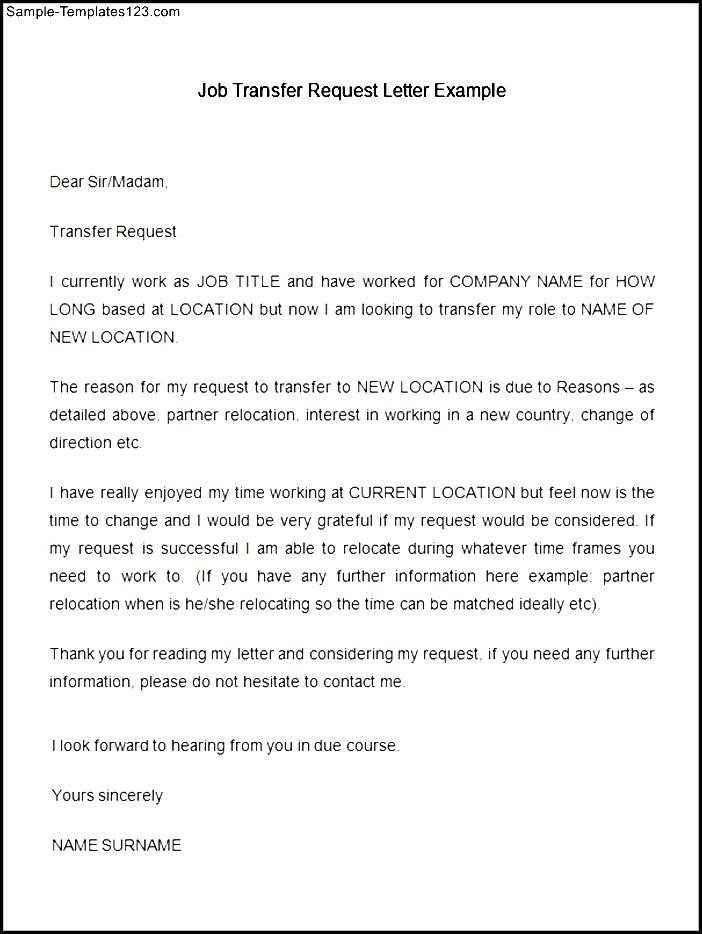
A job transfer letter serves as an official document informing employees about their move from one position, department, or location to another within the same organization. It outlines the reason for the transfer, the new role, and any other relevant details. This letter ensures a smooth transition by clearly defining expectations and responsibilities in the new role.
When drafting a job transfer letter, it’s important to include key elements such as the employee’s current position, the new position, the transfer date, and any required adjustments in salary or benefits. Addressing these details helps maintain transparency and sets clear expectations for both the employee and the organization.
In the following section, you’ll find various job transfer letter templates that can be customized to suit different circumstances. These templates will help you communicate the change effectively, ensuring both clarity and professionalism in your message.
Here are the revised lines with repetitions removed:
Ensure that the job transfer letter is clear and concise. Start by mentioning the employee’s current position and the reason for the transfer. Follow this with a brief description of the new role and any relevant responsibilities. Include the effective date of the transfer and provide necessary contact details for follow-up. End with a positive note about the transition and express appreciation for the employee’s contributions.
- Job Transfer Letter Sample Templates
To create a job transfer letter, follow this simple structure:
Key Elements to Include
- Header: Include the date, recipient’s name, title, and company.
- Introduction: State the reason for the transfer request, specifying the desired position or department.
- Reason for Transfer: Explain why the transfer is necessary or beneficial, either due to personal growth or business needs.
- Details of New Position: Provide the key responsibilities and expectations for the new role.
- Conclusion: Express gratitude for the opportunity and request a meeting to discuss further.
Template Example
| Section | Content Example |
|---|---|
| Header | March 1, 2025 John Doe, HR Manager ABC Corp. |
| Introduction | Dear Mr. Doe, I am writing to formally request a transfer to the position of Senior Analyst within the Data Department. |
| Reason for Transfer | After careful consideration, I believe this role aligns with my long-term career goals and offers the challenge I am seeking. |
| Details of New Position | The Senior Analyst role involves managing data projects, creating reports, and coordinating with cross-functional teams to improve data strategies. |
| Conclusion | Thank you for your consideration. I would be happy to meet and discuss the details of this transfer at your earliest convenience. |
Begin by addressing your supervisor or HR manager directly, using their formal title and name. Clearly state the reason for your transfer request in the opening paragraph. Be concise, focusing on your need for the transfer and how it aligns with your current career goals or personal situation.
State the Purpose of the Transfer
In the next section, explain why you are requesting the transfer. Whether it is for professional development, a relocation, or a change in work environment, ensure that the reason is both specific and relevant. Avoid vague language and stick to concrete reasons that reflect your desire for growth or a new challenge.
Highlight Your Qualifications and Experience
Provide a brief overview of your skills, accomplishments, and the value you bring to the organization. Mention how your background makes you a good fit for the new role or department. This will demonstrate your readiness for the move and reassure your employer of your capabilities in the new position.
Propose the Timeline
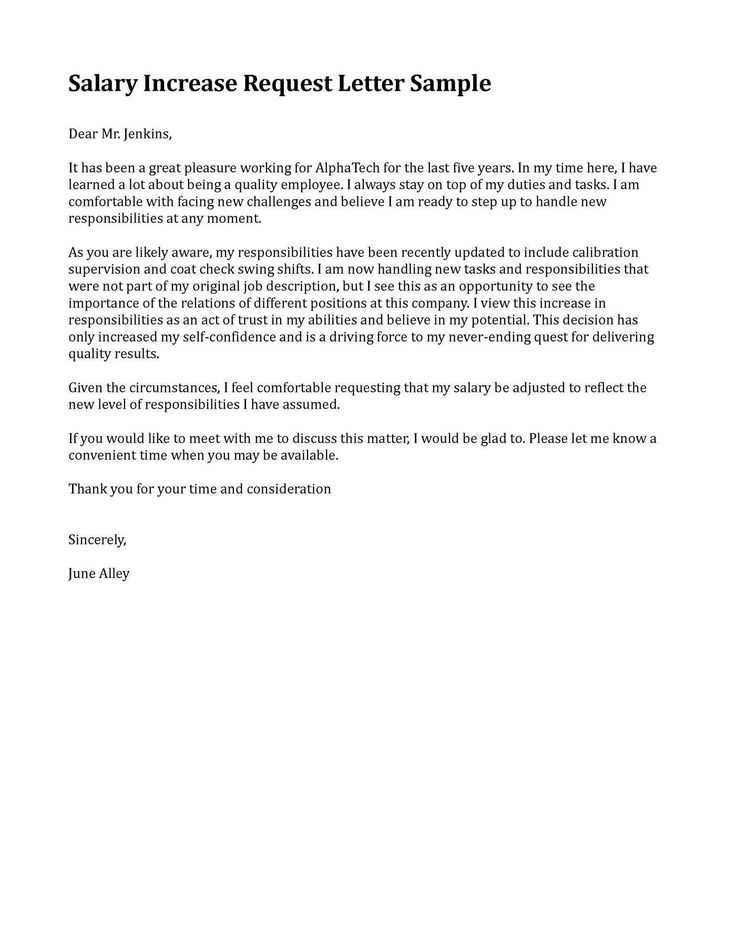
Suggest a reasonable timeline for the transfer, taking into account the necessary preparations and any ongoing projects. Be flexible, offering to discuss the exact timing and transition plan with your supervisor or HR manager.
Closing Statement
Conclude the letter by expressing gratitude for considering your request. Offer to meet in person to discuss the details further and show openness to feedback. Close with a polite, professional sign-off, using “Sincerely” or “Best regards” followed by your full name and position.
- Clear and direct purpose
- Specific reason for transfer
- Relevant qualifications and experience
- Flexible transition timeline
A transfer letter should be clear, professional, and concise. Include the employee’s name, position, and the department they are transferring from. Be sure to mention the new department or role, along with the date of transfer. It’s important to explain why the transfer is happening–whether it’s due to personal requests, company restructuring, or a new opportunity. You should also confirm any changes to the employee’s responsibilities, reporting structure, and other pertinent details related to the transfer.
Transfer Details
Clearly state the date of the transfer and any additional steps the employee must take, such as training or equipment returns. If the transfer involves a change in salary or benefits, outline the new terms. Mention any support provided by the company during this transition process.
Closing Remarks
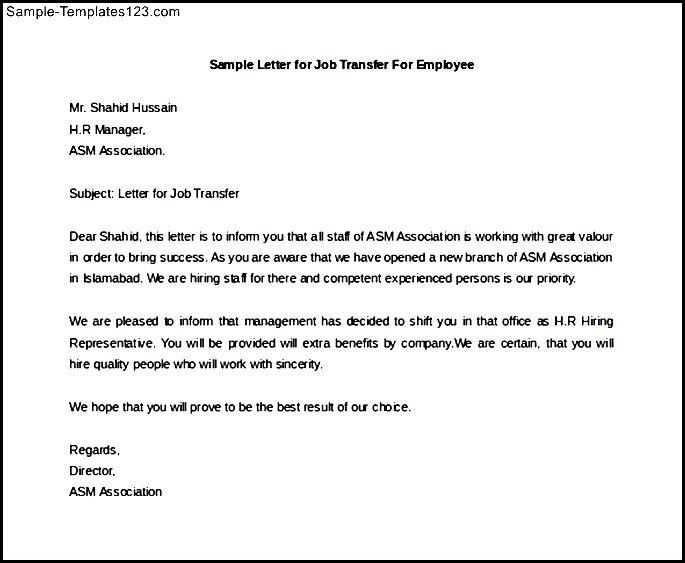
End the letter with a note of appreciation for the employee’s contributions to their current role, and express confidence in their success in the new position. Make sure to offer assistance as needed to ensure a smooth transition.
Use the following template as a guide to request an internal transfer. Personalize it to suit the specifics of your situation and the company’s policies.
Internal Transfer Request Template
Date: [Insert Date]
Recipient Name: [Manager’s Name]
Department: [Current Department]
Subject: Internal Transfer Request
Dear [Manager’s Name],
I hope this message finds you well. I would like to formally request a transfer from my current position as [Current Position] in [Current Department] to the [Desired Department] as [Desired Position].
I believe my skills in [mention relevant skills] and my experience in [mention relevant experience] will make me a strong fit for this role. I am confident that this transfer will contribute to both my professional growth and the department’s goals.
If there are any further details required for consideration, I am happy to provide them. I would appreciate the opportunity to discuss this further at your earliest convenience.
Thank you for considering my request. I look forward to your response.
Sincerely,
[Your Name]
Additional Information to Include
| Field | Description |
|---|---|
| Reason for Request | Briefly explain why you are requesting the transfer and how it aligns with your career goals. |
| Relevant Skills and Experience | Highlight specific skills and experience that demonstrate your readiness for the new role. |
| Availability for Discussion | Provide times when you are available for a meeting to discuss the request further. |
Begin by clearly stating the reason for the transfer and its relevance to the employee’s career path or department structure. This provides transparency and sets the context for the decision.
State the Transfer Details

Include the specific department, location, or role the employee is being transferred to. This keeps the information straightforward and removes any ambiguity.
Express Support and Enthusiasm
It’s important to highlight how the transfer aligns with both the employee’s goals and the company’s growth. Offer your full support, showing excitement for their continued contributions in the new role.
Conclude by providing any necessary steps or expectations, such as additional training or meetings. Be sure to include a clear contact point for follow-up questions or clarifications.
Clearly state the reason for the transfer, highlighting the necessity of relocating for the role. Mention the location details, such as the new office address or city, to clarify where the employee will be based. Ensure that all logistics related to moving are covered, including the potential relocation assistance or reimbursement the employee may receive.
Outline the benefits of the move, such as exposure to new challenges, career advancement, or personal growth opportunities in the new location. Keep it focused on the positive aspects of the transfer and the opportunities it brings.
Provide a timeline for the move, detailing when the employee is expected to relocate, any required preparation, and the transition period. This will help in setting realistic expectations and avoiding any confusion during the process.
Highlight the support offered by the company in facilitating a smooth relocation. Whether it’s financial support, housing assistance, or finding local resources, ensure the employee knows they’ll have help during this transition.
Begin with a clear and direct purpose. Avoid vague statements about your intentions, as they can confuse the reader. Be specific about the reason for the transfer and the desired role or location. If you are uncertain, clearly express that you are seeking new opportunities within the company.
Excessive Formality
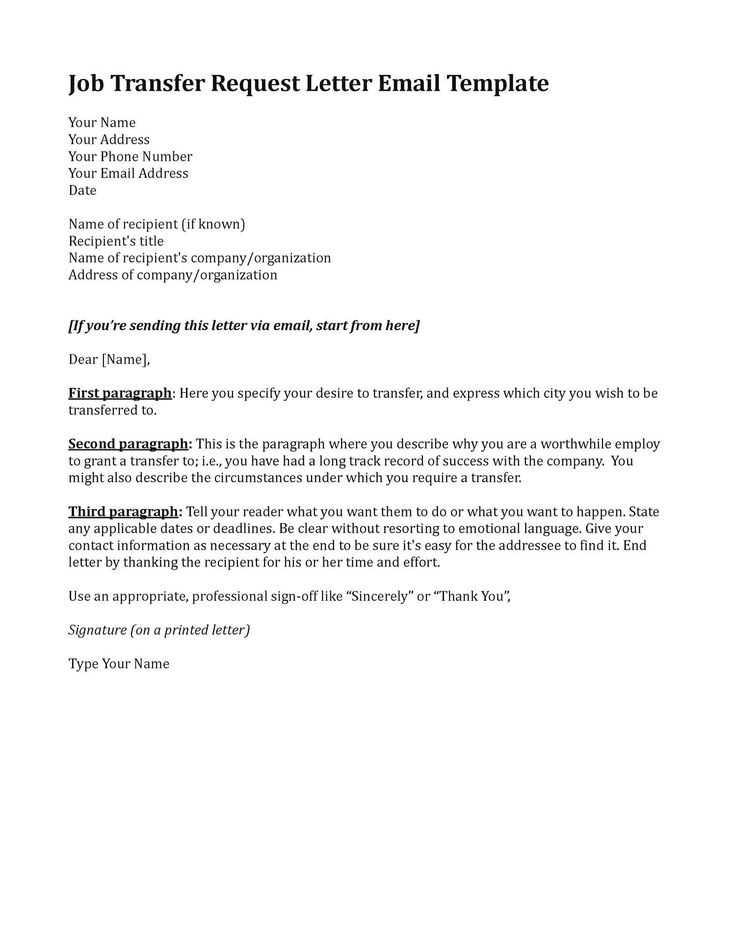
While professionalism is important, being overly formal can make the letter sound distant and less approachable. Use a conversational yet respectful tone. A transfer letter should reflect your enthusiasm and willingness to grow, not a rigid formality.
Missing Key Details
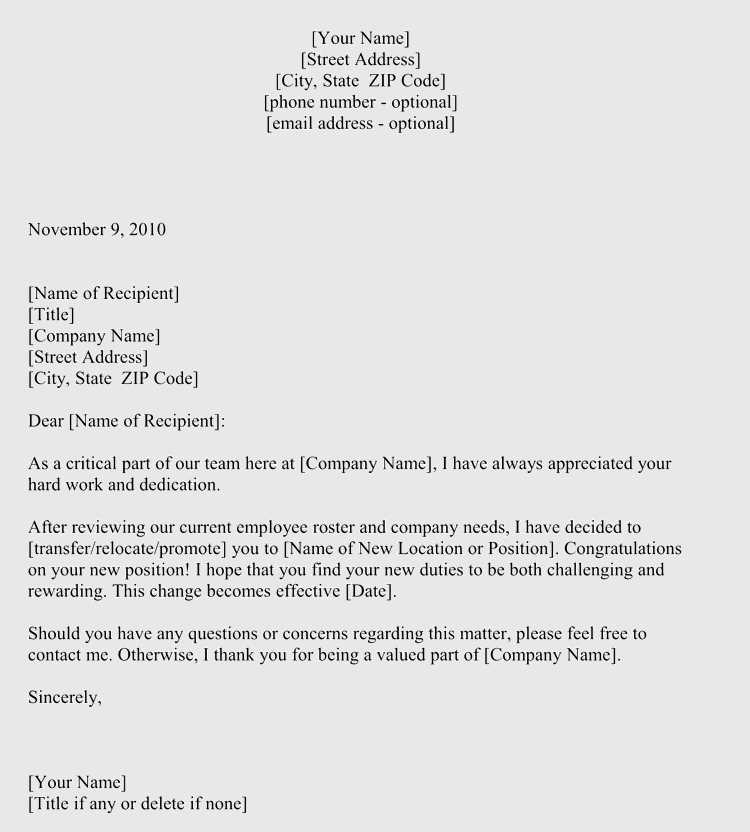
Don’t leave out essential information such as your current position, transfer date, and the team or department you want to join. Clear communication on these points is crucial for your request to be understood and processed efficiently.
Be mindful of spelling and grammar. Simple mistakes can distract from your message and make you seem careless. Proofread the letter to ensure accuracy, and consider having a colleague review it before sending.
When writing a job transfer letter, it’s important to make sure the information is clear, concise, and professional. Focus on the key details that will inform the recipient about the transfer process and any specific requirements related to the new position.
- Start with a direct statement of the transfer. Include the current role and the new position being transferred to.
- Provide relevant dates for the transfer process, including the effective date of the transfer and any interim periods if applicable.
- Outline any additional responsibilities or changes in duties the employee will take on after the transfer.
- Include any logistical details, such as changes in office location, reporting structure, or team assignments.
- If applicable, explain the purpose of the transfer and how it aligns with company goals or personal development plans.
By following these points, you ensure that the transfer letter is clear, to the point, and leaves no room for confusion about the employee’s new role and responsibilities.